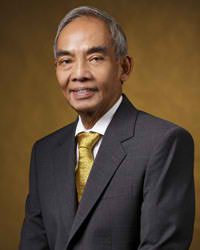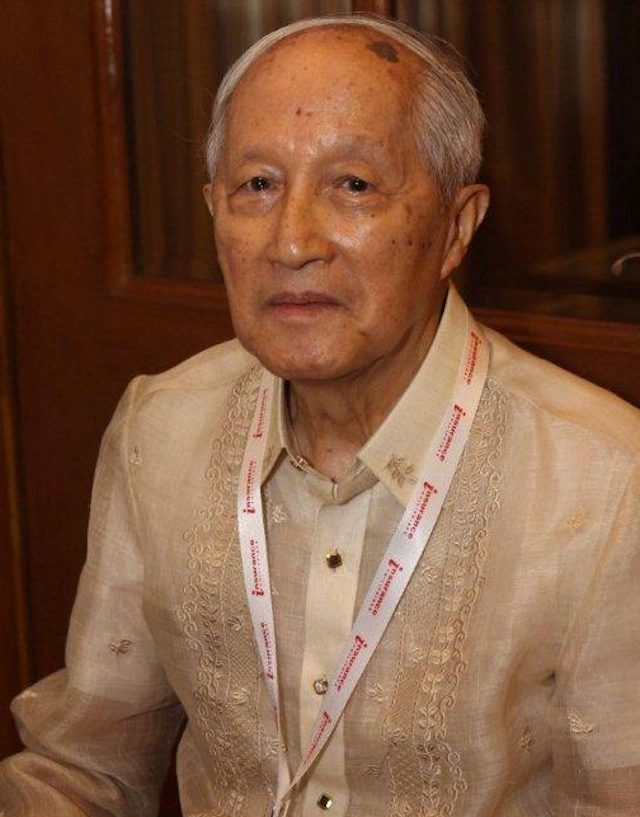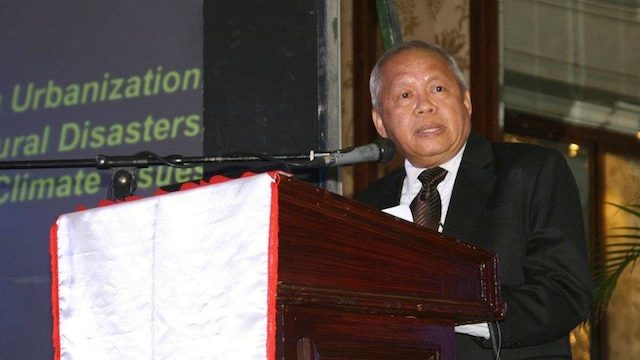SUMMARY
This is AI generated summarization, which may have errors. For context, always refer to the full article.

Reynaldo A. De Dios did it again for, as described by Insurance Commissioner Emmanuel Dooc in his keynote address, the “umpteenth time.”
Last April 23, at the InterContinental Hotel in Makati City, De Dios again gathered for the 11th Philippine General Insurance Summit the country’s insurance industry stakeholders—everybody who was a somebody involved in facing, mitigating, absorbing and recovering from risks and disasters that had recently enveloped our land and our waters.
The morning session was chaired by Ramon Y. Dimacali, president and CEO of Federal Phoenix Assurance Company while the afternoon was orchestrated by Herminia Jacinto, president of the Insurance Institute for Asia and the Pacific.
Updates on the Philippine general insurance and reinsurance markets that started the Summit were given respectively by Mr. Emmanuel Que, chair of the Philippine Insurers and Reinsurers Association Inc. (PIRA Inc.) and Mr. Roberto Crisol, president and CEO of the National Reinsurance Corporation of the Philippines.
Using a-movie-in-process of production scenario as platform, Que discussed how the recent legal requirement to increase capital, the rise in the costs of doing business (astutely glossing over taxes so as to avoid irritating Internal Revenue Commissioner Kim Henares), and the alarming frequency of tsunamis and flood waters added up to “bad” (i.e. challenging) business for insurers.
Crisol, for his review of the state of reinsurance business, went over the menu of reinsurers’ needs and wants, such as:
- incentives to further encourage the setting up of head offices outside of Metro Manila as well as to hasten the merger of insurance companies,
- the prompt implementation by government of major infrastructure projects designed to mitigate the impact of natural calamities, and
- the political will and execution of programs to relocate people away from catastrophe-prone areas.
Then followed the in-depth analyses of the seminar’s 3 central concerns, namely:
- the phenomenon of increasing urbanization;
- the intensification of mother earth’s wrath as reflected in the more recent natural disasters and disruptive weather and climate changes; and
- the rise and vicious impact of cybercrime, a new category of felonies that made the heretofore important element of territorial boundary irrelevant.
The first area of interest – the seemingly unabated growth of cities – is often labelled as “urban sprawl.” Arturo G. Corpus, senior vice president of Ayala Land Inc., called the country, in that respect, “high risk.” He listed 6 needed strategies to address this predicament. He dealt with the need for land use and strategic planning; lifeline systems planning; building stock management; metropolitan and regional planning; water shed and river basin management; and sustainability in education, public education and in the inclusion in business models of the need for risk reduction.
Sherwin Parungao, catastrophe analyst at Analytics of Aon Benfield of Singapore, after listing side by side its benefits vis-a-vis its drawbacks, concluded that “urbanization should be viewed as a key driver for economic growth and human progress… only if we understand how to manage risks effectively.”
The 2nd area of focus – climate change – has affected everyone but Peter Book, of Guy Carpenter, concentrated on its visceral impact, namely food security. He talked about “derisking”agriculture, that sector most vulnerable to the vicissitudes of the skies. Noting that the demand for agricultural products continues to ever-increase even as land and water that are obviously finite, he prescribed, among other action points, welcoming inward (or import) technology transfer, selective learning from the experience of neighbouring peoples, and, by way of general posture towards forward planning, to decide to “start how you intend to finish.”

The Summit’s 3rd issue was the new guy on the block, a bully who has walked at the center of the street, brandishing his evil weapon named cybercrime. The global reliance on technology—a wide-system of collecting, collating, and con-joining data through criss-crossing wires and waves—opened a new territory for the bad guy’s new delight of wrecking havoc on the systems of the good guys; his aim is to breach the integrity of data as it is stored or moved around for significant decision-making.
Mitigating the risk of data tampering, particularly in the Philippines, which is at the top of business process outsourcing destinations, has become a necessity. Mike Gault, CEO and founder of Guardtime, citing studies of Lloyds of London, pointed out that safeguarding data integrity has ranked as number 2 in most boards of directors’ concerns.
Gault suggests that the best approach is to embrace risk mitigation, risk prevention and best practice security standards, and, to illustrate, cited the success of the keyless signature infrastructure of Estonia. Such stance is most needed to meet the standards that, according to Susana Lam, managing director of A.M. Best Asia-Pacific Ltd., rating agencies expect countries to adopt, as SOP in the light the changing global insurance environment.
How then was the insurance industry to respond to the issues posed by increasing urbanization, climate and weather change, and cybercrime? The answer lies in 3 Ps: people, purse, and preparation.
Jumping the talent curve is one course of action advocated by Mr. Julien Parasie, head of the insurance desk of Mazars Asia Pacific. Working in the insurance industry ought to be seen as attractive, lucrative, and satisfying, so as to attract the best talents, as do the banking and consulting industries.
Adi Richard Hazan, Executive Chairman of Catalytics Asia, talked about holistic risk evaluation, i. e., assessing risks that an enterprise faces not in isolation but together, permeating as it were all the items in the balance sheet. The whole is not necessarily only the sum of all its parts; in insurance, rating each different risk differently when and as it relates to others, is the better approach.
The 3rd P – preparedness – was the focus of Rachel Yin of FM Global. There are products and processes out there, available for enterprises, by which the latter can protect themselves, purposively and profitably.
How well an enterprise is addressing its risks can be gauged by the sophisticated methods of rating agencies. Lam spoke precisely on this role of rating agencies who themselves are affected by the changing global insurance environment. And, bringing the discussion close to home, the Lloyd’s Risk Index, as explained by Kent Chaplin, Managing Director of Lloyd’s Asia, showed how the enterprises in the Asia Pacific themselves view risk.

The 23rd of April Summit clearly demonstrated, as Commissioner Dooc summarized, that the challenges and issues we confront are becoming more and more difficult and complex.
But he is undaunted. “But I know,” he continued, “that our industry will be prepared and ready to meet the challenge.
Taking the stance of the poet Nancy Scheibner who challenged everyone ‘To create a newer world, To translate the future into the present… to practice with the skill of our being, The art of making possible,’ the Commission proclaimed, “Yes we can. It is possible.” – Rappler.com
Reynaldo “Gerry” Geronimo is a partner at the Romulo, Mabanta, Buenaventura Sayoc & De los Angeles law office. He is known as The Trust Guru and maintains a website, www.thetrustguru.com.
Add a comment
How does this make you feel?
There are no comments yet. Add your comment to start the conversation.